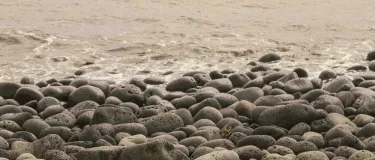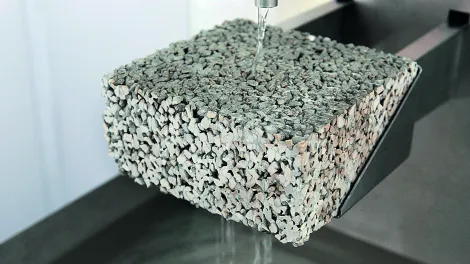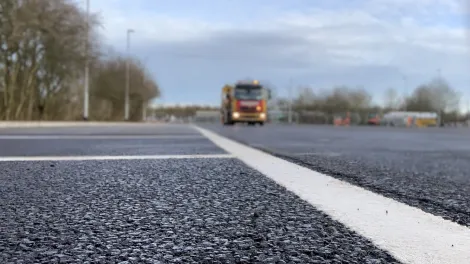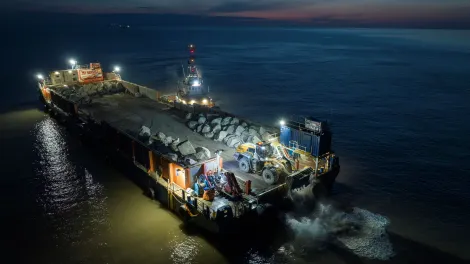Coastal Management: Its Importance and the Methods Used

In the context of environmental conservation and sustainable development, the continuing importance of coastal management cannot be underestimated.
Its primary role is to combat the detrimental and increasingly widespread effects of coastal erosion, a phenomenon that poses significant threats to various aspects of both human and natural environments.
We’ll be taking a look at the various methods used for coastal management, understanding their importance in safeguarding towns, heritage sites, well-loved landmarks, beaches and wildlife.
Understanding Coastal Management
At its core, coastal management involves strategies and actions designed to protect and preserve coastal areas. It plays a crucial role in preventing erosion, a natural process accelerated by human activities and climate change.
Effective coastal management not only helps in maintaining the natural landscape but also ensures sustainable development along coastlines, balancing ecological preservation with human needs.
Types of Coastal Management
Coastal management employs a variety of techniques, each tailored to address specific challenges posed by coastal erosion and human impact.
These techniques range from hard engineering structures, designed to physically shield the coast, to softer, more environmentally harmonious approaches. Understanding these diverse methods is key to implementing effective coastal protection strategies.
Hard Engineering Approaches
Hard engineering approaches involve constructing physical structures to protect coastlines against the forces of nature. These methods are often visible and immediate in their impact, offering robust defence against erosion and sea level rise.
Sea Walls
Providing effective long-term protection, sea walls serve as strong physical barriers designed to withstand the often quite considerable impact of waves. There are many different types of sea walls, some of which can incorporate amenities and promenades. They can withstand extreme weather more effectively than other types of sea defence, and are crucial in preventing the loss of land due to erosion, especially in areas with high wave activity.
Seawalls protect the base of the cliff from the action of the sea and are intended to reflect or refract wave energy. Ideally, seawalls should be placed behind a large beach, with the sea only reaching the wall during storm conditions. Therefore seawalls are the final defence from flooding and erosion.
The sea wall in Blackpool, UK, is a prime example. Spanning over 11 kilometres, this wall has not only protected the promenade and infrastructure from the sea's powerful forces but also enhanced the area's aesthetic appeal, contributing to its popularity as a tourist destination. A recent £61 million project involving the replacement and upgrade of Blackpool’s existing coast defences will help to protect more than 4,000 businesses and residential properties.
Products like Xbloc are making a significant impact in this area. Xbloc is a large wave breakwater armour unit randomly placed, interlocking concrete armour units. It has been applied successfully in breakwaters and shore protection projects on six continents in block sizes ranging between 1.8 and 40 tonnes.
Revetments
Revetments are sloping rock, concrete or timber structures which run along the top of the beach, parallel to the cliff. They are designed to absorb the wave’s energy and reduce erosional impact on the cliff. Revetments are also less detrimental to beach levels than seawalls, reducing beach scour by dissipating wave energy rather than reflecting it.
Often sediments (including sand, shingle and pebbles) are carried through or over the structure and, due to the less turbulent water behind, are deposited. This creates a buildup of beach at the base of the cliff helping to protect further against erosion.
The revetments along the Norfolk coast, for instance, have played a significant role in reducing coastal erosion. In particular, the revetments at Happisburgh have been instrumental in slowing down the rate of erosion, which had been threatening residential properties and historical landmarks.
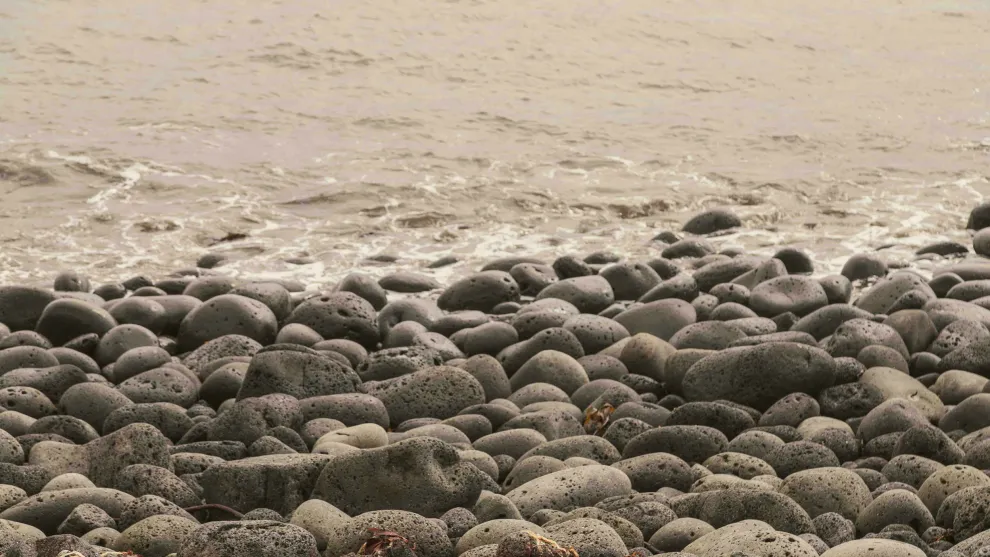
Soft Engineering Approaches
Soft engineering approaches are more environmentally friendly, focusing on enhancing and working with the natural environment to protect coastlines. These methods are often less intrusive and can be more sustainable in the long term.
Beach Nourishment
If beach levels become low, it may be beneficial to undertake beach renourishment. A more natural and aesthetically pleasing approach to coastal protection, it involves adding large quantities of sand or shingle to a location to create wider, more gradually sloped beaches. This reduces the destructive impact of waves as long-sloping beaches cause the waves to break earlier and lose much of their energy before they reach sea defences and cliffs.
Once the material has been added to the beach, it will be subject to natural sediment transport and therefore it may be necessary to carry out further renourishment over time to maintain the beach at the desired level.
An example is the beach nourishment project in Bournemouth on the south coast, which involved around 350,000m³ of sand being pumped ashore using a pipeline and distributed by bulldozers. Over the years, millions of cubic metres of sand have been added to Bournemouth’s coastline, significantly reducing the rate of erosion and protecting the seafront properties and tourist facilities.
Dune Stabilisation
Dunes are formed by the sand, which blows inland from the beach and is deposited in the area behind the coastline. During storm surge events, the foot of the dunes can be eroded but the dunes act as a very flexible buffer zone, which protects the hinterland from erosion and flooding. This means that a dune acts as a natural flexible coast protection and sea defence measure.
Dune stabilisation by vegetation is a sustainable protection measure, enhancing the natural protection ability of dune areas. It provides some protection against wave and storm surge attacks and at the same time, it preserves the natural coastal landscape. However, the natural protection provided by beach and dune vegetation will be impaired if the plants are damaged by undergrazing or overgrazing, or if beach users generate too much traffic.
The Sefton Coast sand dune system, which stretches for around 20km between Liverpool and Southport, is the largest in England. Dense scrub vegetation had taken over and unnatural elements, including old construction rubble and dumped tobacco waste, had created barriers to natural processes.
A dune stabilisation project along the coast, using marram grass planting, has effectively protected the dunes and the inland areas. This project not only stabilised the dunes but also created habitats for local wildlife, including rare species like the sand lizard and northern dune tiger beetle, along with the natterjack toad, with the Sefton Coast being home to 40% of the UK’s population.
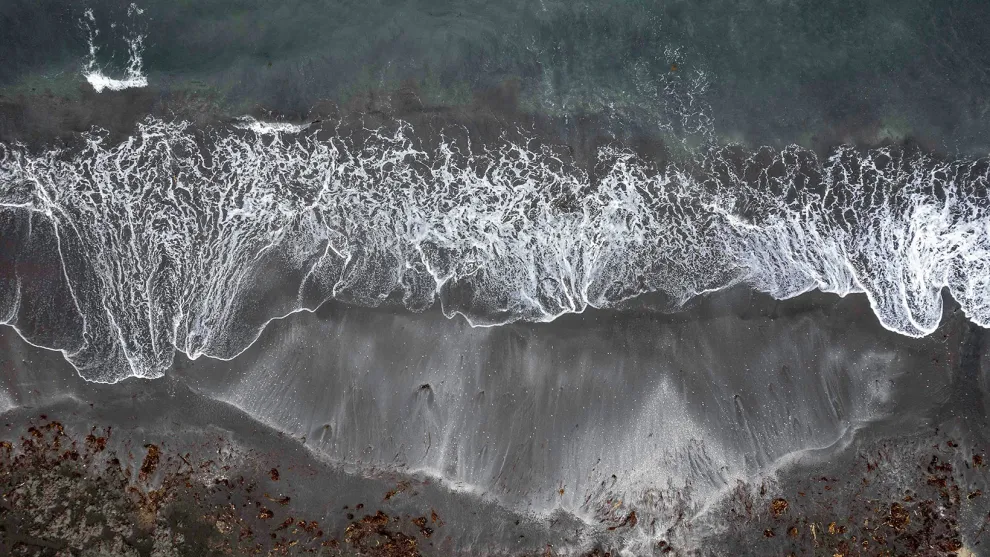
Integrated Management Strategies
Integrated management strategies combine various approaches, considering both human and environmental needs. These strategies often involve long-term planning and collaboration across different sectors.
Planning
Strategic planning includes implementing regulations to control development in vulnerable coastal areas. For example, the planning policies in place along the East Sussex coast in the UK help to manage and mitigate the risks of coastal erosion and flooding. These policies have been crucial in guiding development away from high-risk areas, thereby reducing potential damage and preserving the natural coastline.
Climate Change Mitigation
Efforts to mitigate climate change are integral to coastal management. Global initiatives like the Paris Agreement play a crucial role in addressing the broader causes of coastal erosion and sea-level rise. By committing to reduce greenhouse gas emissions, these initiatives not only tackle the root causes of climate change but also contribute to the long-term sustainability of coastal management efforts.
Analysing the solutions that Aggregate Industries can provide
Here at Aggregate Industries, we have an array of Sea and Flood Defence aggregate solutions that are well-suited to cater to the evolving requirements in a world where rising sea levels are an increasing concern.
Here, we’ll examine four primary products that are already making a significant impact around the UK:
Sustainable Drainage Systems (SuDS)
SuDS, or Sustainable Drainage Systems, presents an innovative and eco-conscious approach to managing surface water runoff in urban and rural areas. Departing from conventional systems that swiftly channel water away, SuDS prioritise sustainability by replicating natural processes to reduce flooding, enhance water quality, and foster biodiversity. These systems incorporate various techniques like permeable surfaces, green roofs, swales, detention basins, and infiltration devices, allowing rainwater absorption or slowdown. SuDS not only mitigate flooding risks but also act as natural filters, removing pollutants and improving water quality before reaching water bodies, thereby demonstrating a commitment to sustainable, environmentally friendly drainage solutions.
Hydromedia
Hydromedia is an advanced porous concrete solution designed to address urban water management challenges and promote sustainable development. Composed of a specialised mix of aggregates, cement, and water-permeable additives, Hydromedia facilitates rapid water drainage, reducing surface runoff and minimising the risk of flooding. Its porous nature allows rainwater to infiltrate the surface, replenishing groundwater and preventing the strain on traditional drainage systems. Beyond its functionality, Hydromedia also contributes to improved water quality by filtering out impurities as water permeates through the concrete.
SuperDrain Asphalt
SuperDrain Asphalt stands as an innovative and sustainable solution which addresses crucial issues in water management and urban resilience. This specialised asphalt product is engineered with advanced permeability features, allowing it to efficiently manage surface water runoff in urban areas. Unlike traditional asphalt surfaces, SuperDrain facilitates rapid water infiltration, reducing the risk of flooding and minimising strain on conventional drainage systems. Its unique composition promotes groundwater recharge and helps maintain water quality by filtering impurities as water passes through the asphalt.
Armourstone
Armourstone stands as a robust and versatile solution for coastal protection and erosion control. This specialised material, typically large, durable stones, serves as a protective barrier against the forces of nature, preventing erosion and safeguarding coastal infrastructure. Deployed strategically, Armourstone absorbs wave energy, mitigates the impact of storms, and provides long-lasting stability to shorelines. Beyond its formidable protective qualities, Armourstone enhances the aesthetic appeal of coastal areas, seamlessly blending functionality with natural beauty.
You can find out more about Aggregate Industries; solutions by visiting here.
Conclusion
Understanding the various techniques of coastal management is crucial in our efforts to protect and preserve our coastlines. It calls for a collective effort from communities, policymakers and businesses to adopt sustainable practices in coastal management. Continued research and innovation in this field are imperative to adapt to the ever-evolving environmental challenges, ensuring the longevity and health of our coastal environments.





